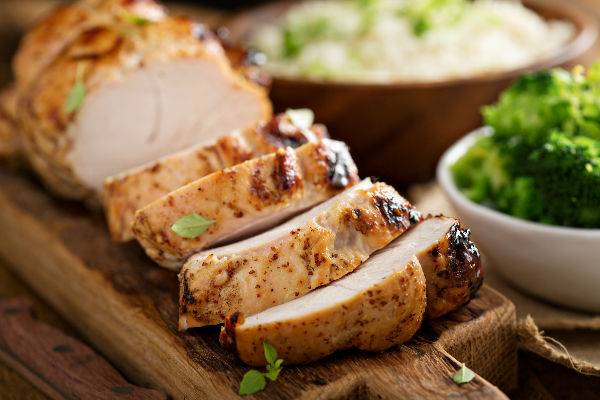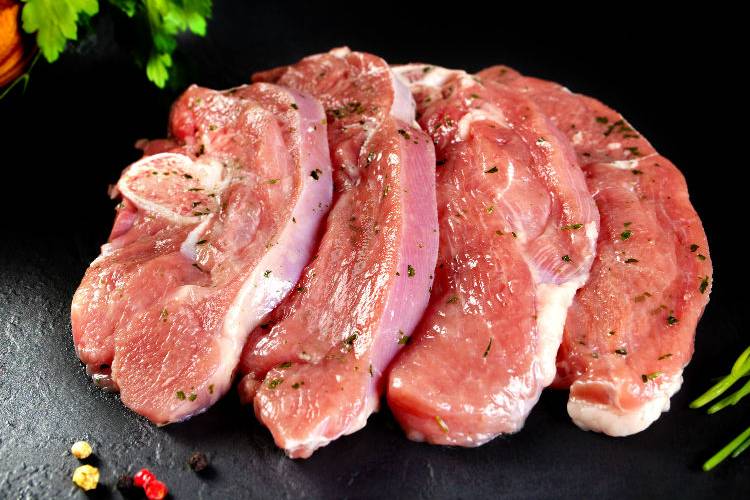Turkey: low in fat, but rich in flavour!
Turkey meat is no longer just a seasonal food, becoming more and more popular in Spanish menus. Its nutritional value, low caloric intake and increased supply are the main reasons why turkey consumption has grown in recent years.
fresh food
Share

The turkey has its origin in the American continent. The Spanish conquerors called it 'the hen from the Indies' and brought it from Mexico in the sixteenth century. Soon, turkey became a delicacy that only wealthy people could afford. But little by little, it started to become the main dish at Christmas meals in much of Europe and the United States.
AN INCREASE IN CONSUMPTION
Compared to the European Union, where about 5 kg per capita is consumed yearly, turkey consumption in Spain is lower, at about 1.5 kg. But it is gradually gaining popularity, as much for its nutritional values as for the greater availability of cuts and preparations.
It is a type of meat that highly recommended by nutritionists, due to its nutritional properties and ease of digestion, both of which make it ideal for the whole family, even for young children and the elderly.
The turkey is also very popular with athletes, because of its high protein and water content and low fat content, facilitating digestion. It is a low-calorie food, with about 160 kcal per serving. Being low in fat and cholesterol, it is one of the best lean meats on the market.
Turkey is very popular with athletes, because ofits high protein and water content and low in fat.

NUTRICIONALS PROPERTIES
• It has lots of B vitamins: B1 or thiamine, B2 or riboflavin, B6 and B12. Above all, vitamin B3 or niacin stand out, which contributes to the energetic metabolism and diminishes tiredness and fatigue.
• It is rich in minerals such as potassium, which contributes to the keeping your blood pressure healthy; Phosphorus, which is good at caring for bones; Selenium, which protects against oxidative damage; And zinc, which helps take care of the eyesight.
• It is rich in proteins, which are important for growth and development during childhood, adolescence and pregnancy because it also contains small amounts of folic acid.
• It helps you to sleep. It contains tryptophan, an essential amino acid involved in the production of serotonin, a substance that exerts a calming effect on us and helps regulate sleep.
ADVICE ON BUYING AND STORAGE
When we go to the supermarket, we can find both fresh turkey, either whole or in sections, as well as more elaborate turkey meats (hamburgers, marinades, meatballs and so on).
With fresh turkey, depending on what we want to cook, we must choose one part or another. In general, with turkey, as with chicken, we can cook all of its parts, keeping in mind that the breasts are more versatile, as they can be grilled or cooked in breadcrumbs, etc. In addition, the lower parts (thighs and quarters), as well as the wings (wing tips and meaty parts) are ideal to cook in the oven, grilled, or in a stew.
The truth is that, thanks to its many nutritional properties, turkey in any form can any elaborate turkey, can be a quick, healthy and tasty solution to the problem of what to cook for dinner.
Did you know… why turkey is eaten at Thanksgiving?
In 1621, when the first settlers arrived on the coasts of North America, the Indians helped them to survive a particularly cold winter and, thanks to them, the corn crop was very abundant. Therefore, the settlers decided to organise a great meal of gratitude for them with cornbread, vegetables, duck, fish and wild turkey. Today, Thanksgiving is the day of the year when more turkey is consumed, around the world.

Market fresh fish, from the sea to the supermarket in under 24 hours
Read more
Market fresh fish, from the sea to the supermarket in under 24 hours






